As Noida-based couple cooks up an initiative to make the beloved biryani healthy, chefs and documentarians take us into the kitchens of Asian communities biased towards this one-pot meal
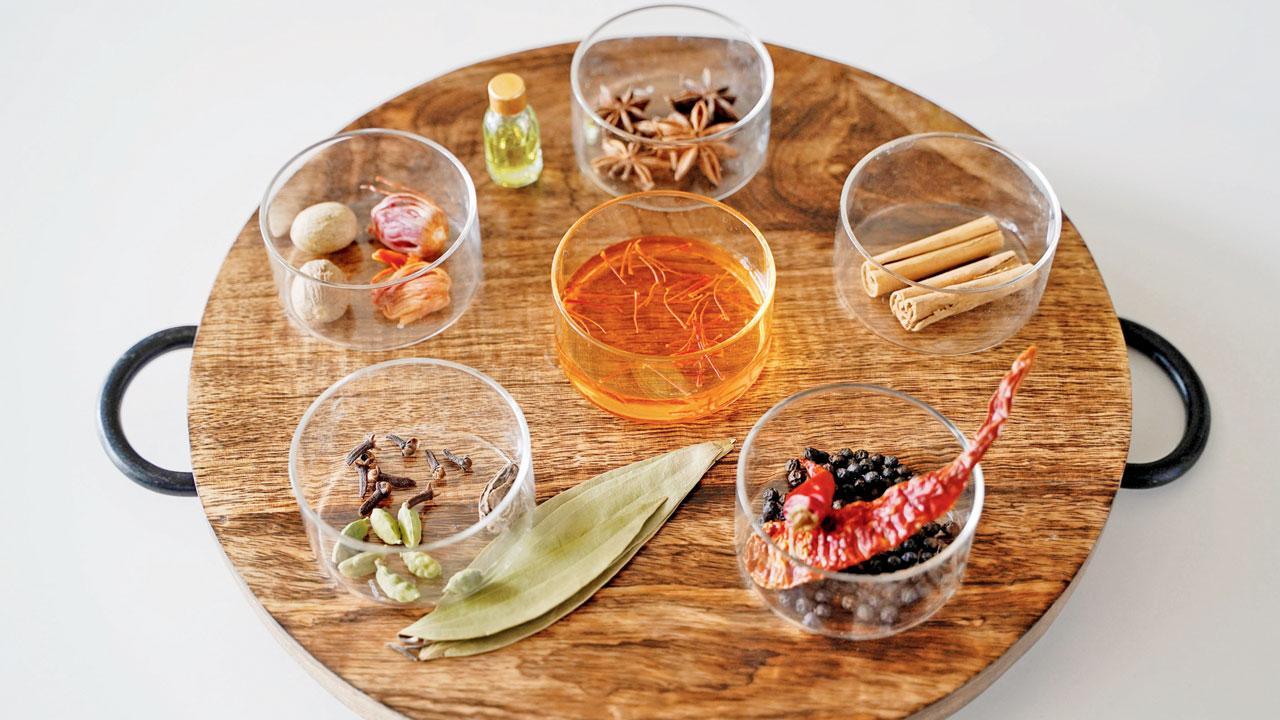
Mubashira Zaidi and her relative Raza go through the spices and age-old recipes. Zaidi and her husband Ali Mehdi’s venture focuses on the different spices and techniques used in the biryani’s many avatars such as Hyderabadi, Lucknowi and Kolkata. Pics/Nishad Alam
To many in the subcontinent, biryani is an emotion and a meditation: Patiently waiting, mostly on Sundays, for spiced meat or veggies and fragrant rice to be cooked on dum, as the aromas waft gently through the rooms. A whiff of rose water amidst the sombre, whispering tones of light spices that perk up each long grain of rice, while the low flame heats up the medley slowly, but evenly. Biryani is a song that draws you in layer by layer—it lights up parts of your brain as fond memories wake up—childhood nostalgia, celebratory feasts, the first time you tasted it, and the rising defence for each’s personal choice for a type of biryani.
ADVERTISEMENT
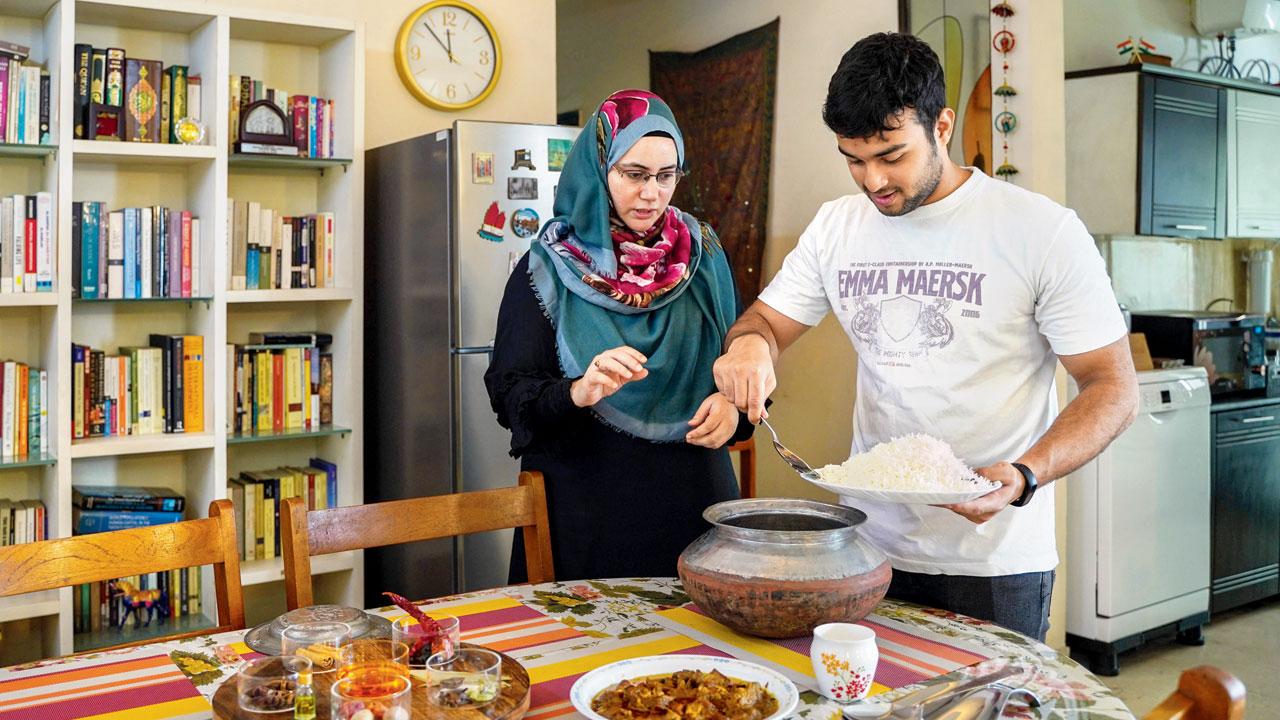
It is broadly believed that biryani arrived with the Mughals, and Tamil and Malayali workers spread it to South East Asia. A push-cart vendor inspects his creation in old Delhi. Pic/Getty Images
It may come with a heritage and lineage, but its richness is often misconstrued as unhealthy. How true this is, is a question that perturbed social scientists and researcher duo Mubashira Zaidi and her husband Ali Mehdi. “When the world wants to move towards a healthy diet, nobody thinks of curries and biryanis—it’s mostly salads and the like,” quips Zaidi, a Noida resident. Her research focusses on the economic empowerment of women; Ali is a health researcher. The couple is behind a social venture, Art & Aromas of Biryani, which they underline is not commercial. It aims to gather both, health and women empowerment, under one platform while looking at culture with a sensitive eye. “We chose biryani because it is messy yet massy—everyone loves it,” says Zaidi. “We want to go back to its health aspects, and focus on the spices and techniques used in the different types, be it Lucknowi, Hyderabadi or Kolkata.” They hope to lower healthcare expenditures by “healthifying” biryani, while also promoting home cooking.
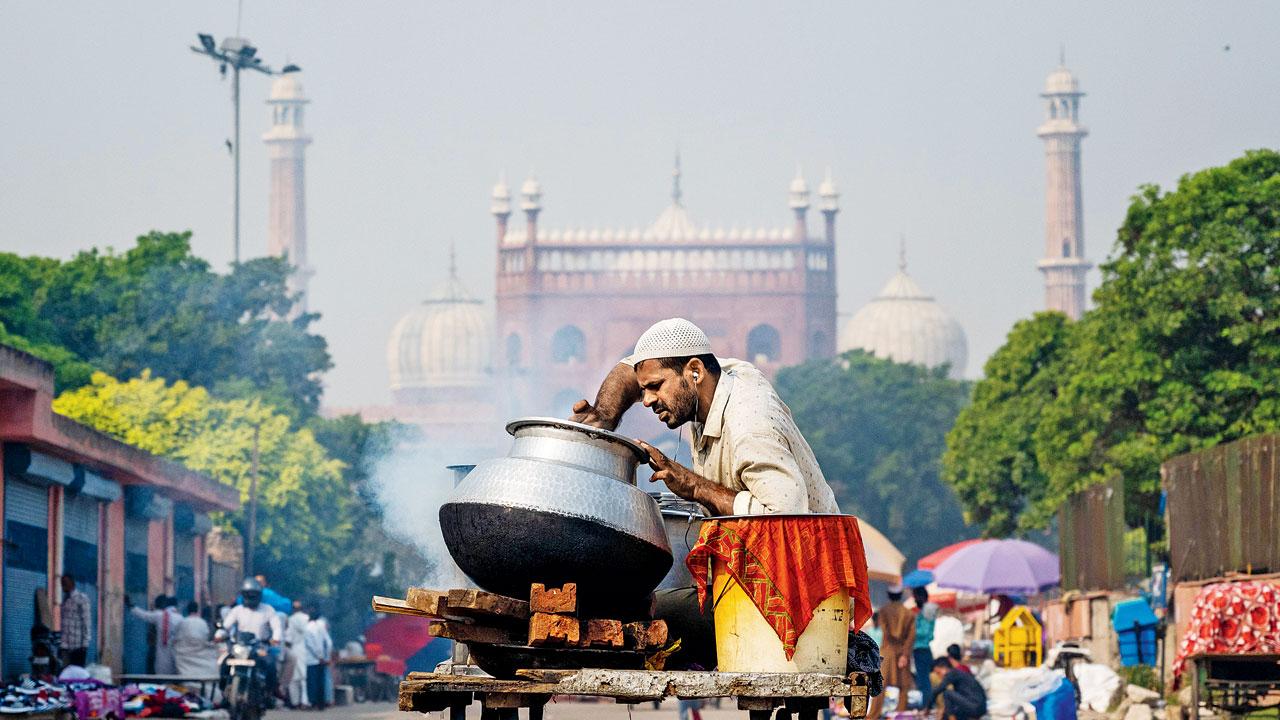
As the idea germinated, family recipe books in Urdu and Hindi, referred to by three generations, were pulled out for reference. The couple interviewed extended family and a simplified version of the Lucknow biryani recipe went up on their website. “It is healthier in terms of spice and fat use, as compared to the Hyderabadi or Mumbai versions,” says Zaidi. The two also hope to concoct healthy spice mixes simple enough to be used by men, in an attempt to shift the labour dynamics of the Indian kitchen.
Delhi-based historian and food-culture blogger Rana Safvi says the layered rice dish has its roots in Central Asia. “Biryani comes from the Persian word ‘biryaa’n’, which refers to anything roasted or fried—whether the meat or onions,” says Safvi. “Originally, the dish was called zer-e-biryaa’n, taking from the Persian word ‘zer,’ which means ‘under’ or ‘layered’. It described the layers of fried onions, meat, and rice. The same name finds a mention in a book of recipes from the House of Timur, Nuskh-e-Shah Jahani, written during the time of Mughal emperor Shah Jahan.”
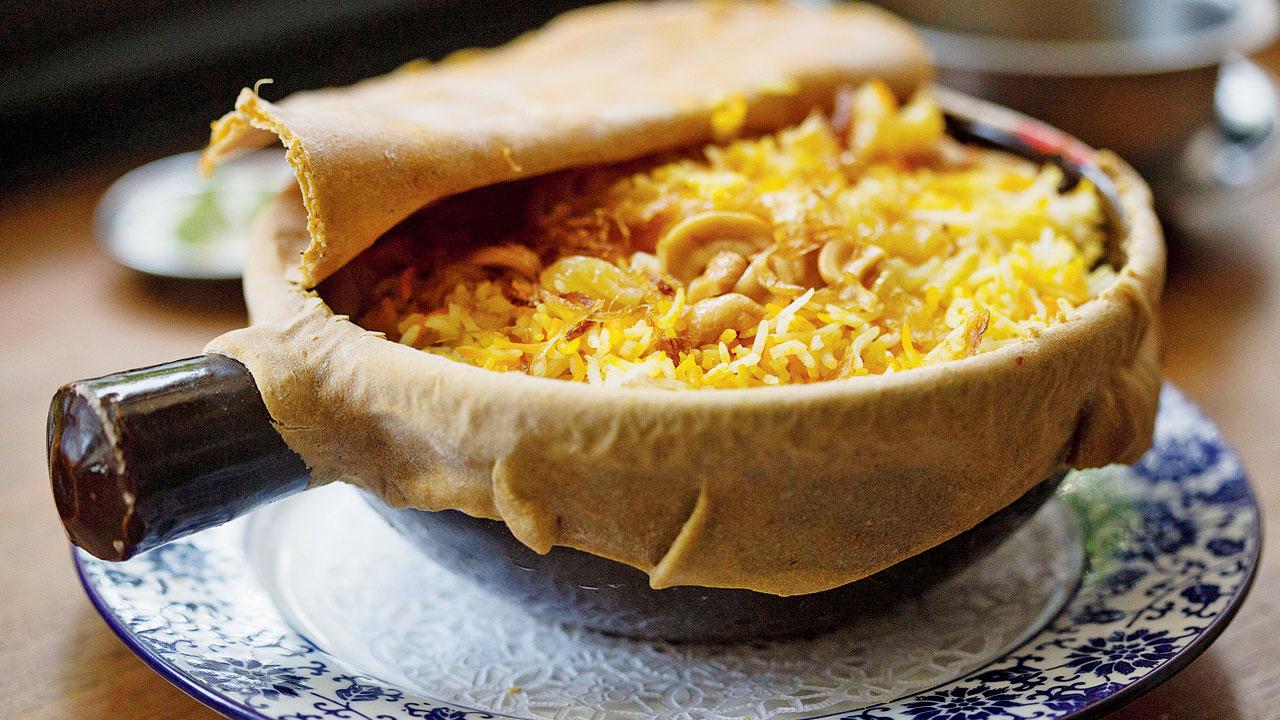
Vegetable biryani at Rangoon Tea House in Yangon, Myanmar. Here, the dish is called danbauk biryani. Pic/Getty Images
International culinary consultant and author Chef Devagi Sanmugam from Singapore agrees that the biryani may have come to India with the Mughals, the Arab traders, or the Turko-Mongol conqueror Timur. “There is also evidence that suggests Tamil and Malayali workers brought the dish to our part of the world—Singapore and Malaysia,” she adds.
Comparing spice levels, Bangladesh has a palate for hotter versions. Kolkata-based Manzilat Fatima, great grand-daughter of Awadh’s King Wajid Ali Shah, finds this counterpart to be greasy, unlike the Awadhi or Kolkata biryani. The latter is also higher on aromatic spices. Fatima runs a biryani kitchen and offers a dining experience on the terrace of her home in Kolkata, under the name Manzilat’s. “Bangladeshi biryani is called kachhi biryani because of how it is cooked,” she explains. “The meat is marinated with spices and a tenderiser is used to soften it. All the layered rice preparations are cooked at one go, unlike the Kolkata biryani for which the qorma is cooked separately before, and then layered with potato and rice.”

The bee hoon biryani is typically found in Singapore and Malaysia
Chef and MasterChef India 2016 finalist, Sadaf Hussain, who visited Bangladesh for a culinary awakening exercise back in 2018, says, “Like most biryanis, the Bangladeshi variant is delicious and their biryani culture is similar to India’s. Speciality shops are scattered across Dhaka that sell beef and mutton versions, but rarely chicken.” The use of mustard oil and preference for kachhey (raw) gosht ki biryani over qorma biryani or pakkey (cooked) gosht ki biryani, caught Hussain’s attention. Wedding guests can be offended if biryani is not on the menu, a friend told him.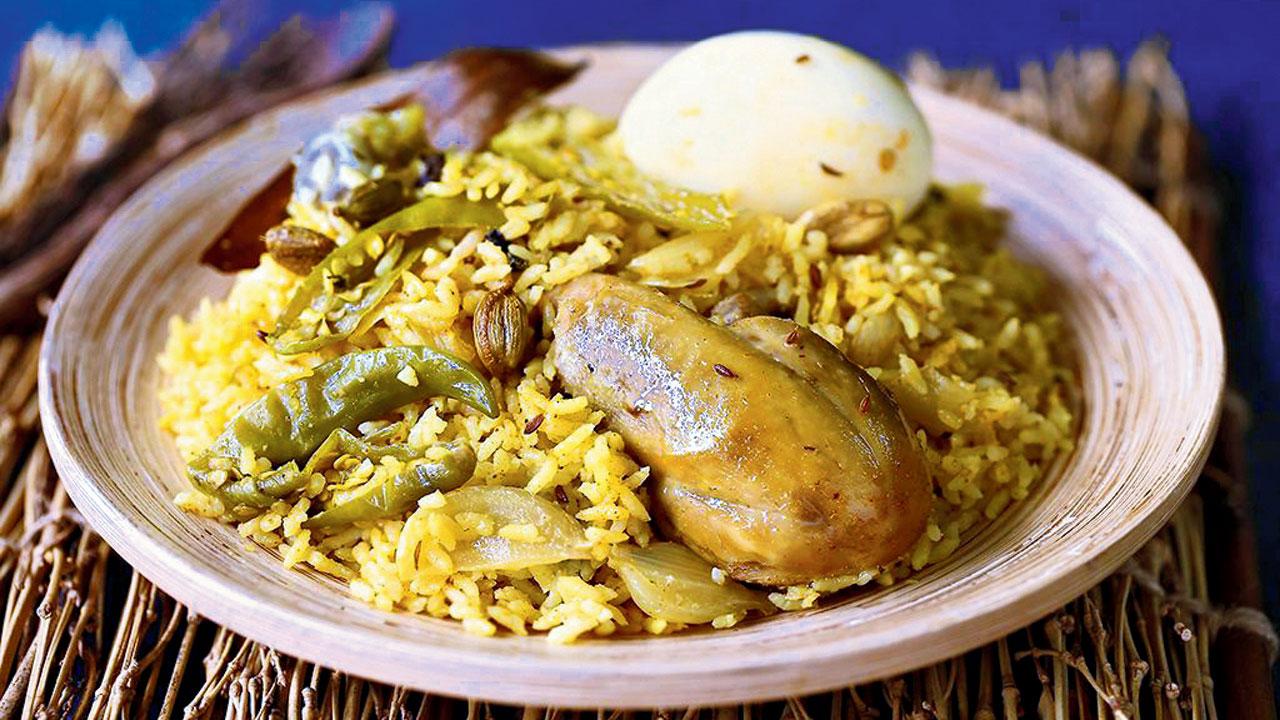 The seeraga samba biryani is a typical preparation from Tamil Nadu
The seeraga samba biryani is a typical preparation from Tamil Nadu
The names for biryani in South Asia might differ, but not the universal love for it. In Malay, it is called nasi biryani, the Singaporean Tamils call it biryani soru, and in Myanmar, it’s called danbauk biryani. “We use the same spices that Indians do, however, we add pandan leaves [screw pine leaves] and lemongrass for added flavour,” says Sanmugam. “In biryani made by the Malays and Indonesians—especially what’s sold at hawker stalls—chicken stock cubes are added to the rice to make it more flavourful. At budget eateries, the basmati rice is cooked with just cinnamon sticks, pandan leaves and lemon grass. Yellow colour is added to make it ‘biryani rice’ and customers get to choose the topping—rendang chicken, mutton or beef. Rendang is the Indonesian/Malay style of cooking meat in ground spices and several herbs such as turmeric leaves, kaffir lime leaves, pandan leaves, fresh bay leaves and lemon grass. Instead of water or stock, thick coconut cream is used.”

Manzilat Fatima, Rana Safvi and Chef Sadaf Hussain
Malays and most Singaporeans love their biryani with lots of gravy, usually dalcha (mutton ribs, dal, curry powder and vegetables cooked together). The rice is cooked separately. Some Malay caterers serve deep-fried pieces of spicy chicken with rice and top it with dalcha or a chicken curry. “Even if it is not a dum biryani, many call this pilau rice and curry. During Eid, you’ll find bee hoon biryani—made with rice vermicelli—at stalls,” says Sanmugam, for whom biryani was a bi-annual treat in her childhood.

Chef Devagi Sanmugam
“Because it was so rare, biryani days were exciting for me,” she says, “Once a year, my father’s company would have a dinner party and the then famous biryani caterer, Jubilee Restaurant, would be hired for the task. My father would bring home any leftovers and at about 2 am, mum would wake us up to eat it. I was about seven years old, but I still remember the intoxicating fragrance. The scent of the hot and flavourful rice, mutton, ghee, and achaar all packed into the open leaf—a traditional natural wrapper for food in those days—left us mesmerised. The woody aroma of the leaf, which was the dried sheath of the base of betel nut leaves, made it more flavourful. These days, biryani comes wrapped in brown paper lined with banana leaves or in disposable boxes. It’s just not the same.”
 Subscribe today by clicking the link and stay updated with the latest news!" Click here!
Subscribe today by clicking the link and stay updated with the latest news!" Click here!








